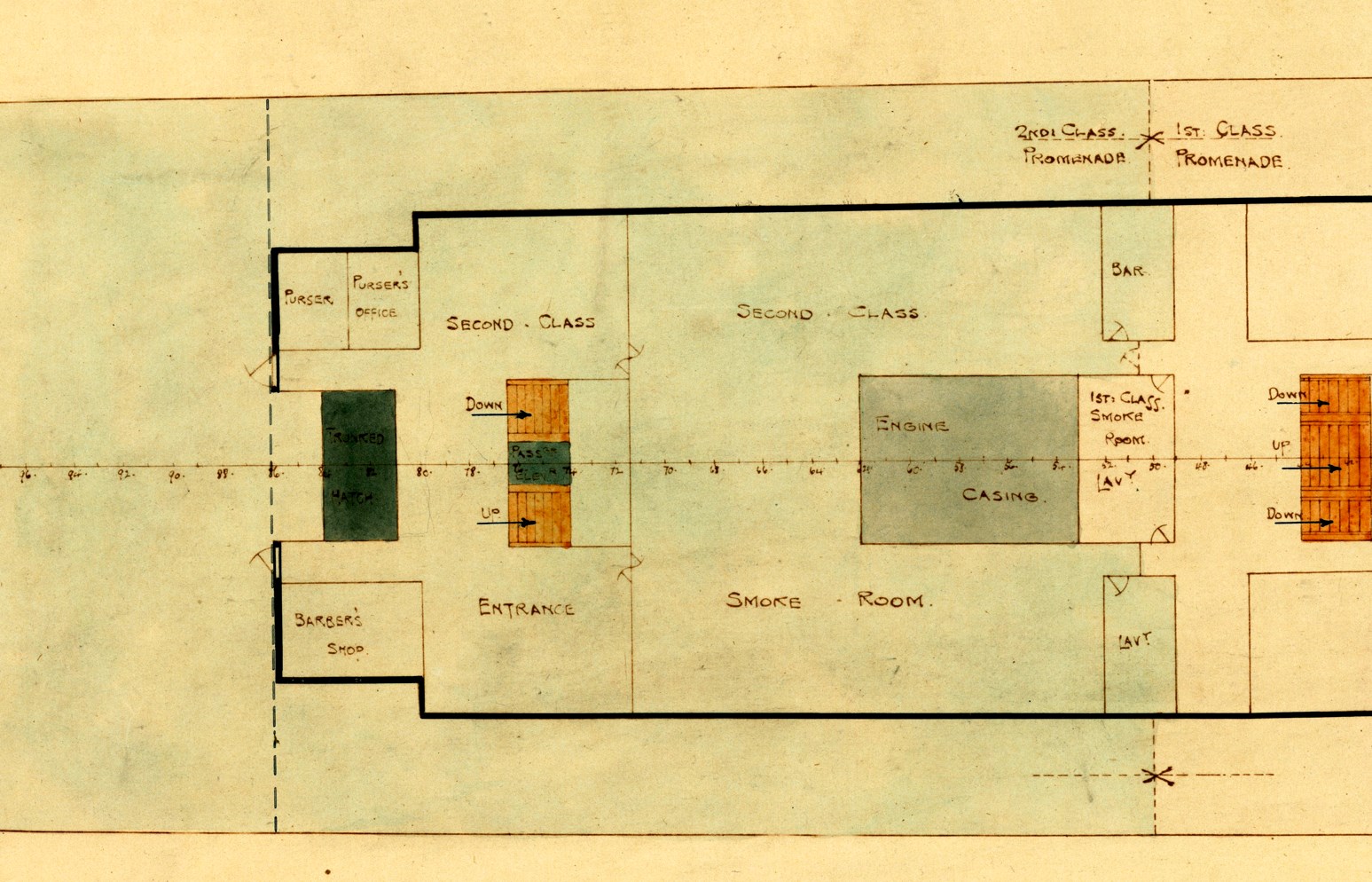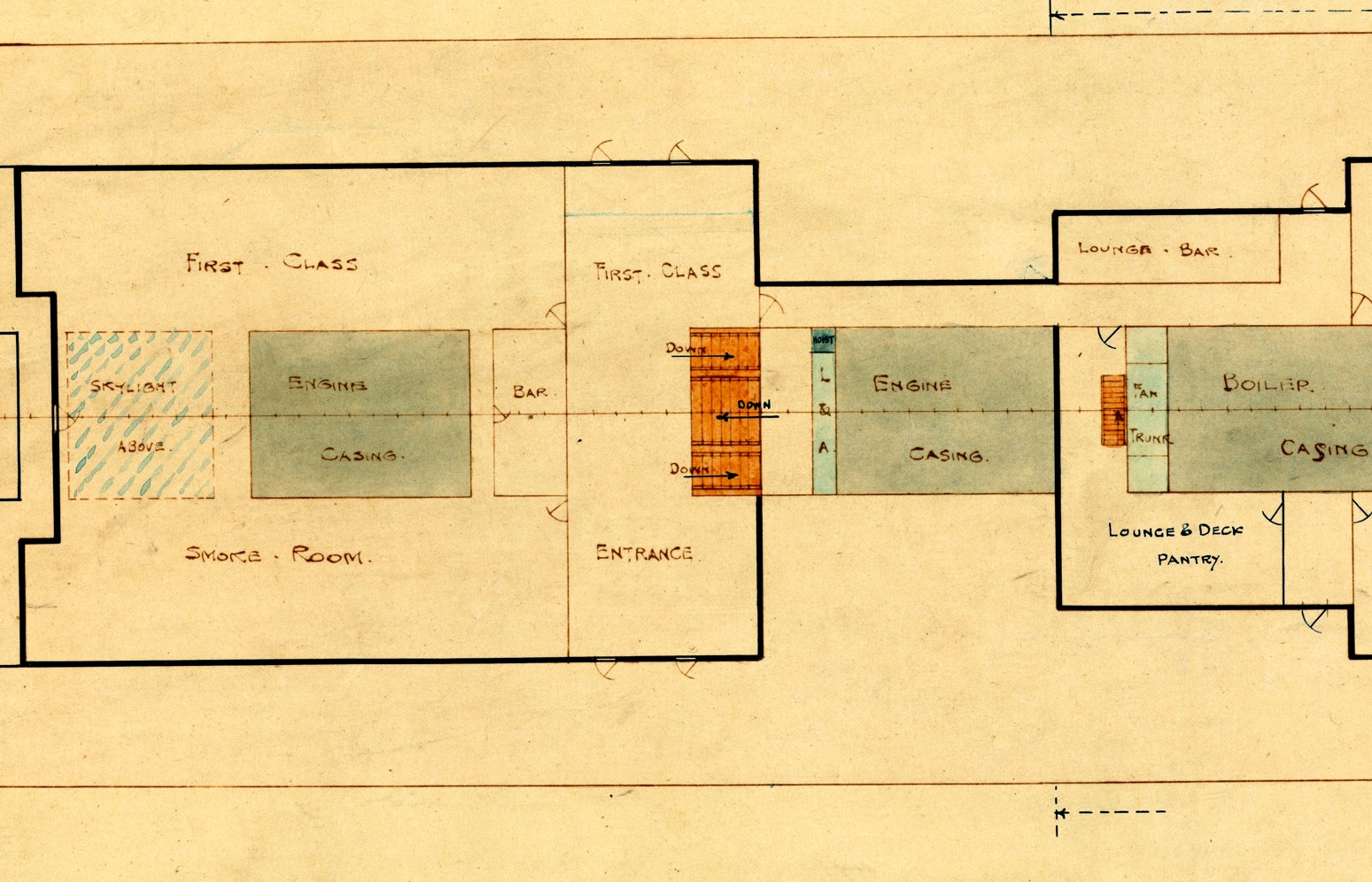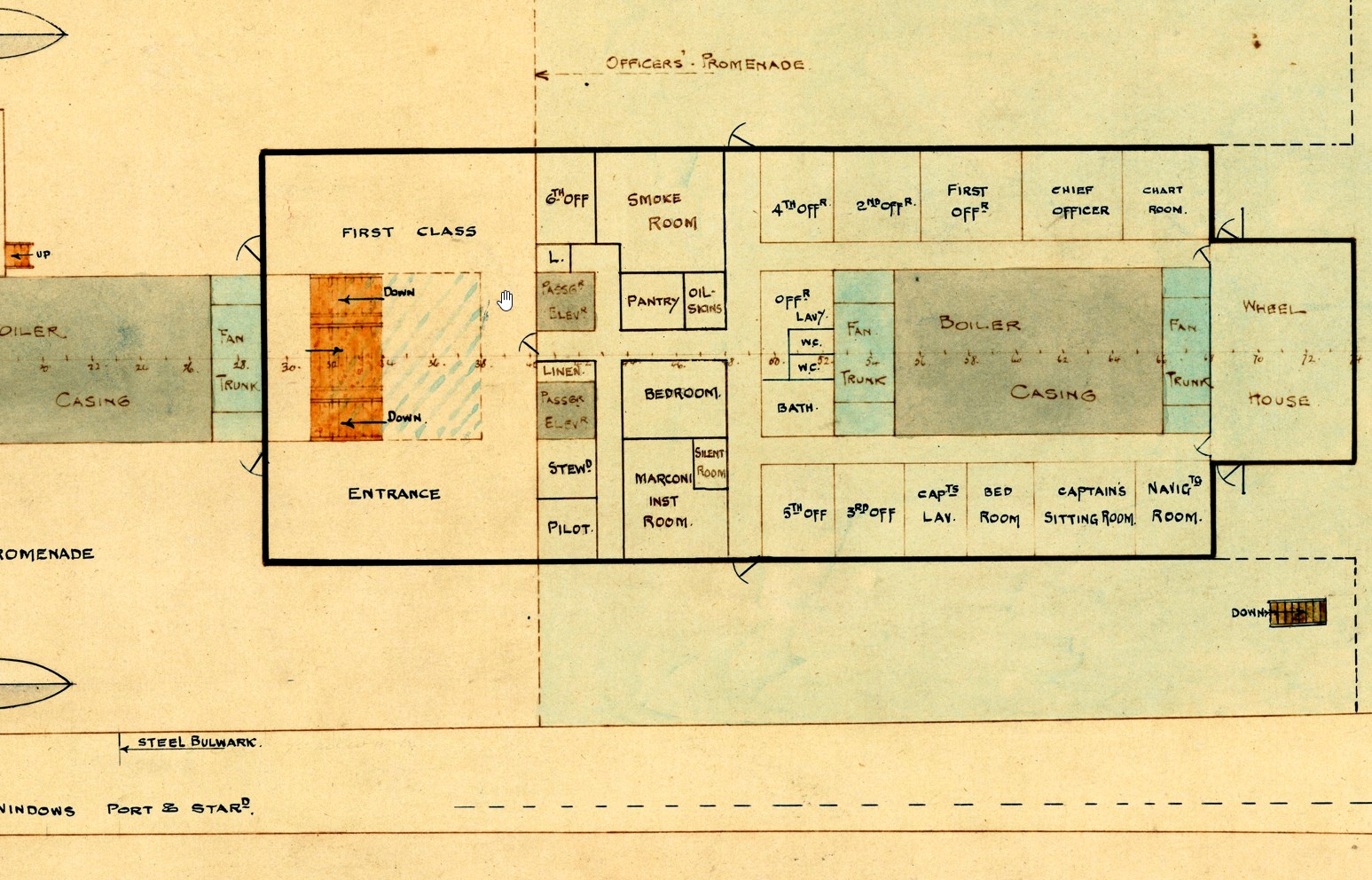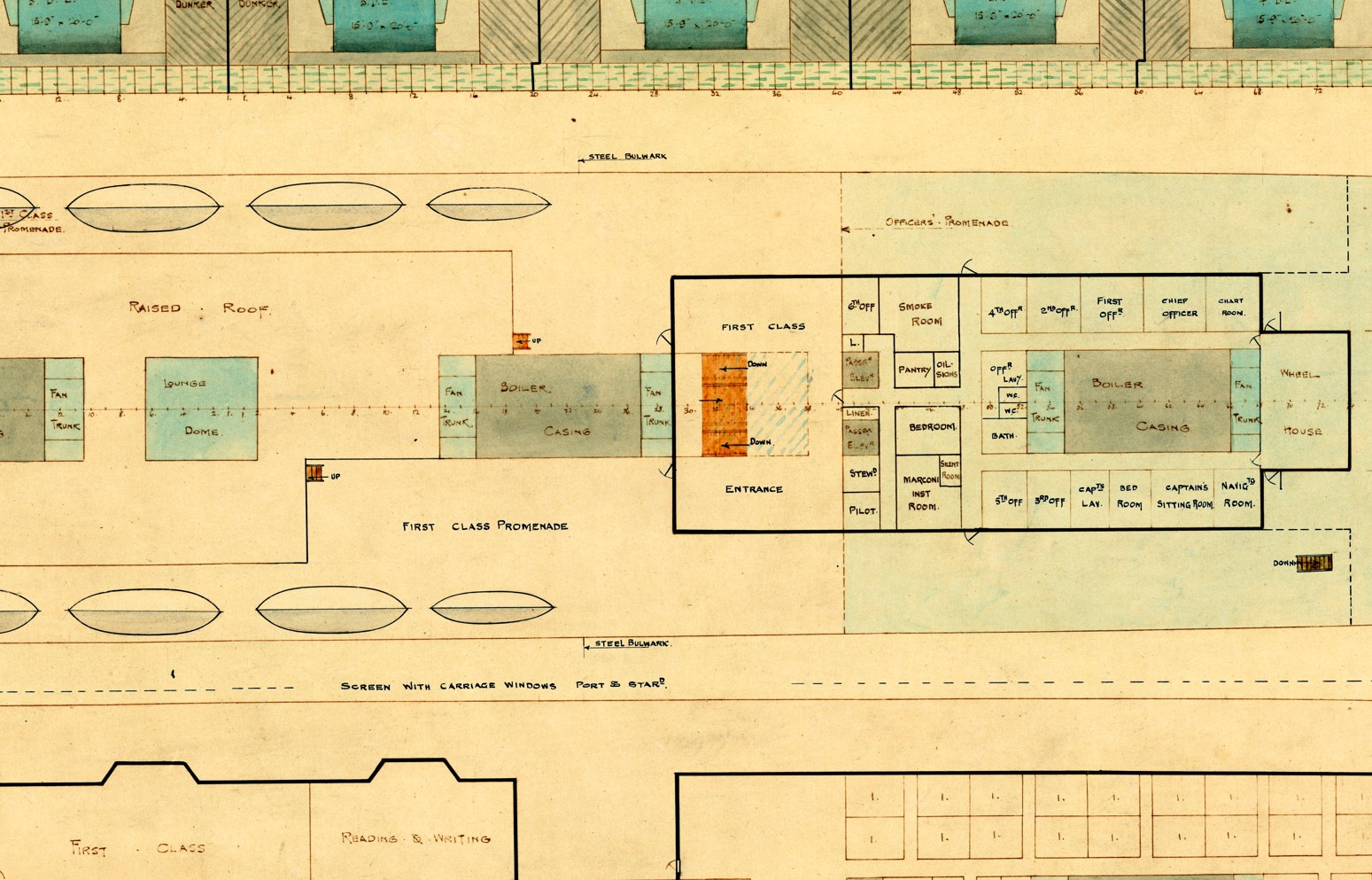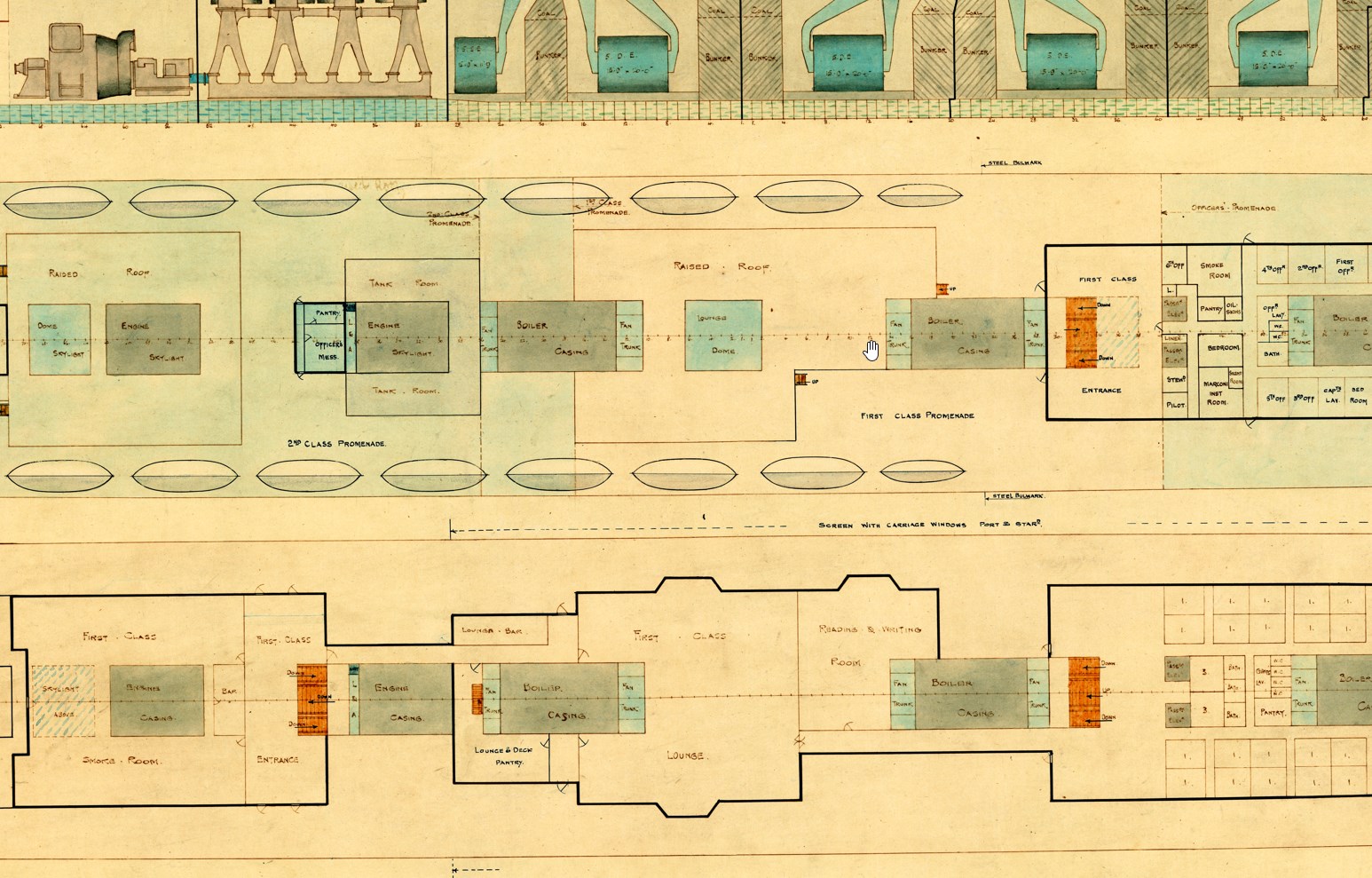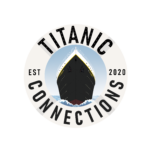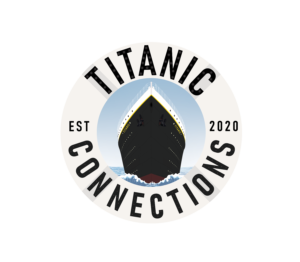The Intended Exterior of Design "D" For the Olympic Class
Did You Know…
…that the original design accepted for the Olympic and Titanic, known as “Design D,” had a number of major differences from the two ships that were eventually launched in Belfast?
While there are no known drawings of what presumably would be called Designs A, B, and C, we do have the existing Design D drawings, which are the ones upon which Harland and Wolff would have presented to the White Star Line when the two agreed upon the building of the two ships (with the possibility of a third to be completed later). The presumption has always been that the three “missing” designs would be scaled-up versions of the Big Four liners, particularly Adriatic, the last of that grouping. We can only wonder at what the first conceptions of White Star’s new mammoths might have been.
Design D, however, shows not so much a scaled-up Adriatic but a design that is in some ways a radical departure from that of ships of the time and in others very reminiscent of other contemporaneous designs.
Perhaps that most noticeable thing about Design D, given how important they would later be to Titanic, are the ship’s lifeboats. The design shows 14 full-size lifeboats with two smaller cutters at the front. This, at least, matches the initial compliment on Olympic and Titanic save for the additional four Engelhardt collapsible boats. All 16 boats, however, are placed aft on the boat deck, with the cutters being just abaft the second funnel and each followed by seven evenly-spaced regulation lifeboats. This would have drastically changed the appearance of the new ships.
While the placement of the lifeboats would’ve been different to our eyes, it would’ve followed the practices seen in the Big Four. Adriatic’s boats were situated after just as Design D shows them for the Olympic-class ships. A more radical change in the design, however, would be the omission of a mainmast.
While not necessarily the first thing noticed in the drawings, a closer inspection shows only the foremast. This would have completely altered several aspects of the Olympic-class ships and been a complete departure from contemporary designs of the time. The new Lusitania and Mauretania each had two masts, while the Big Four ships each had four. A single mast would not become vogue until near the end of the ocean liner era in the 1950s and 1960s. Beyond the visual changes, the Olympic-class ships would have had to make alternative arrangements for their wireless aerial, which could no longer be suspended between two masts. It is likely that, as with some later vessels such as the Empress of Britain in the 1930s, that this aerial could have been suspended between two of the funnels. As wireless was still in its infancy in 1907 and 1908 when these designs were coming together, this was likely not a primary concern to Harland and Wolff, but if followed through on, it could’ve had an important impact on the Titanic during her ill-fated maiden voyage.
The rest of the outward design, as far as we can tell, is likely to be very similar to what we have come to know. Four buff, black-topped funnels, the graceful counter stern, the classic bow shape, and even the overall shape of the superstructure are all there very close to the way we remember them. There’s no complete exterior drawing to show exactly what she would’ve looked like, but it’s safe to say that she would’ve looked similar on the outside. The one other exception is the center anchor and hawse pipe, which do not make an appearance on either the overhead drawing of the forecastle or the starboard elevation. The compass platform might also have been located elsewhere, as a dome over the first class lounge appears to be in that spot in Design D.
Internally, however, the ships would be quite different. Next time, we’ll take a look at the internal differences between Design D and the Olympic-class as they were built.
The first page of the original drawings for Design D, showing a starboard elevation and overhead looks at the Boat Deck, A Deck, and B Deck (including the forecastle and poop)
